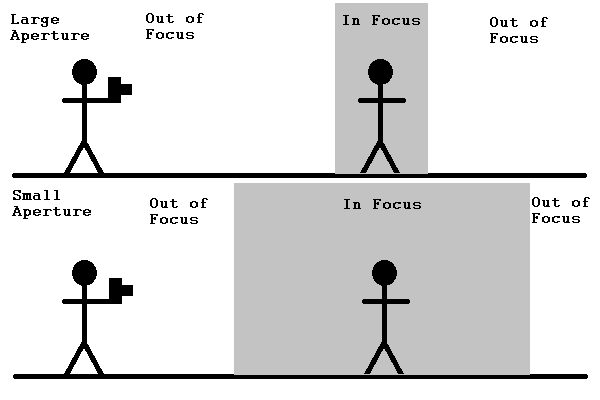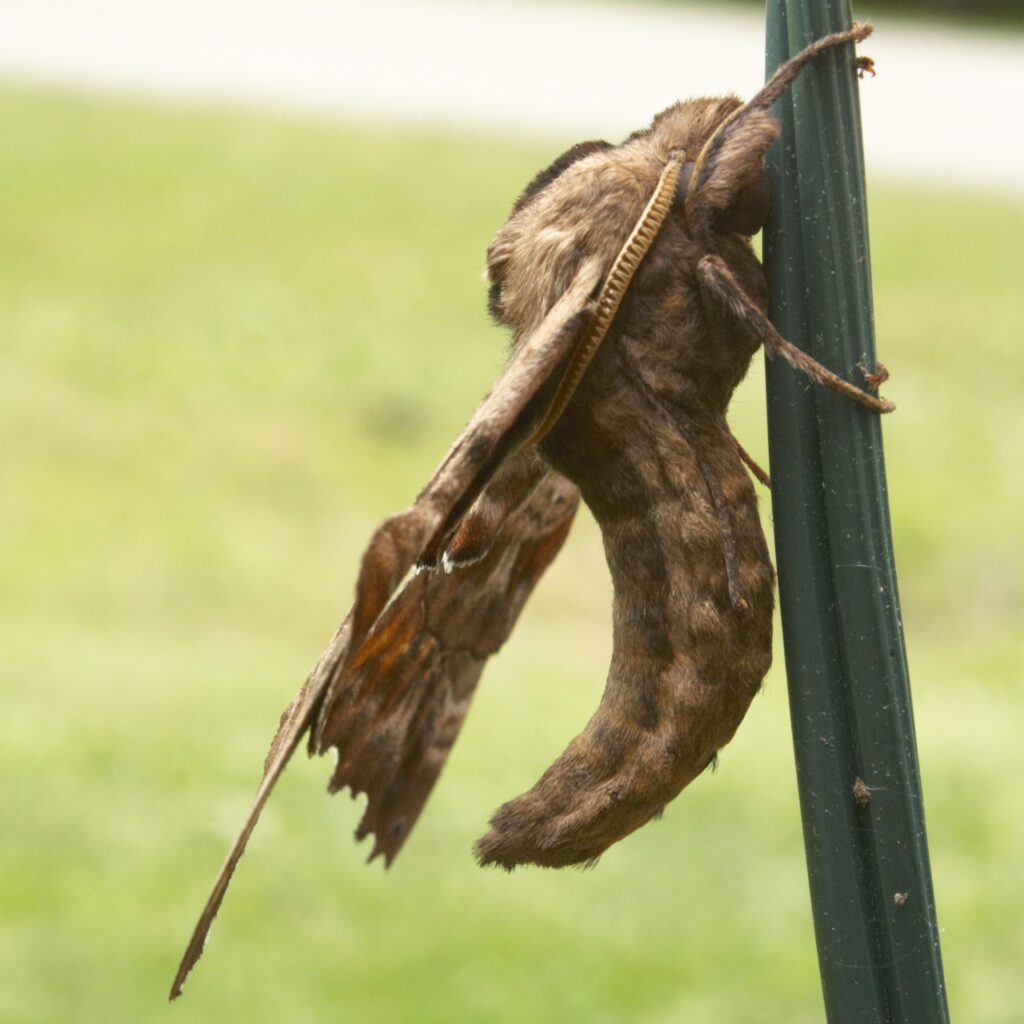The actual size of Mothra was slightly smaller than shown in the Godzilla movies. Mothra was only about 1.5 inches long with a 2 inch wingspan; I guess the film crew zoomed in like I did … or the people in Japan are really tiny.
This is a zoomed in picture of a Sphinx Moth. They are everywhere. They are not even remotely rare. If they went all “Alfred Hitchcock: The Birds” on humans, we would be doomed, if they had beaks. We think this Sphinx Moth was either of the one-eyed or two spotted variety, but we could not tell for certain because the back wings (with the spots) were hidden. This moth was hanging off of the cord for our outdoor light string all day Tuesday.
Originally, I took some pictures with my Samsung Galaxy A14, but they came out … disappointing. The phone seems to perform a lot of post processing on pictures. When zoomed in, the pictures are pixelated with little to no detail. It is not the phone gallery program because they are the same when viewed on a computer. If you click and zoom in on the pictures, you can see the difference. It turns out that this is a common complaint for the Samsung Galaxy cameras. The pictures the camera takes are perfectly fine for SMS and social media, but camera is not adequate for good wildlife photography. I also noticed that the image is only 900 x 1600 pixels, but it should be more like 5300 x 9400 pixels. I need to look into that more.
After being disappointed in my phone camera, I pulled out my cheap amateur DSLR, a Canon Xsi. I took about 50 pictures of the moth. I tried to get different angles, perfect focus, and no motion blur, but I never took a perfectly focused picture with no motion blue. I got close, but not quite perfect. I do not have my tripod in the RV, so it is hard to get rid of all motion blur.
For one set of pictures, I messed with the “depth of field”. Depth of field is a fancy term that refers to “how large is the area of acceptable focus in the image”. The smaller the aperture, the larger the depth of field. The extreme of this is the pin hole camera with “zero” aperture size that has “infinite” depth of field; everything is in focus. The downside is that a pin hole camera just requires a very long exposure time to get enough light.
The following two pictures were taken using the opposite extremes of aperture that my DSLR and 55mm lens can handle. The lens can do a slightly larger and smaller aperture at a different zoom than this picture needed. A larger F-stop number is a smaller aperture size. If you zoom in, you can see that the wings on the left picture (larger aperture/smaller depth of field) blur more at the ends that the wings on the right picture (smaller aperture/larger depth of field). Being so close to the subject, the depth of field is pretty small in both cases.
Depth of field can be used stylistically or to your benefit . If the background is cluttered, you can make it blur away with a smaller depth of field and getting closer to the subject. If you have a screen or chain-link fence in front of you, use a small depth of field and stand close to the fence. The links may blur (mostly) out of the photo. Unfortunately, this can be hard to do with a phone camera where you may have less control of the settings.






One response to “We found Mothra; where is Godzilla?”
Fascinating “creatures’ you are meeting in your adventures!